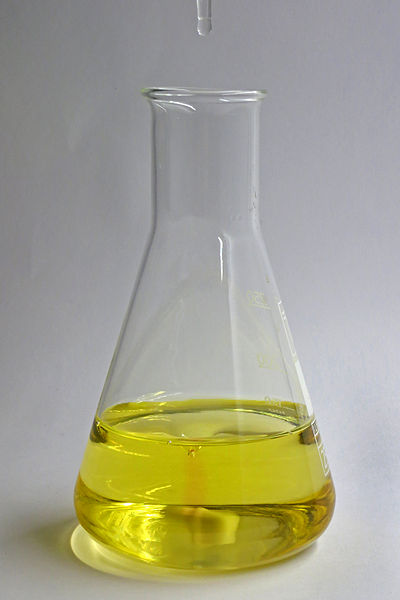Iodometry, known as iodometric titration, is a method of volumetric chemical analysis, a redox titration where the appearance or disappearance of elementary iodine indicates the end point.
Color of iodometric titration mixture before (left) and after (right) the end point
Dilute solutions containing iodine–starch complex. Using starch as an indicator can help create a sharper color change at the endpoint (dark blue to colorless). The color above can be seen just before the endpoint is reached.
Iodine standard solution, sealed in an ampoule for iodometric analysis.
Titration is a common laboratory method of quantitative chemical analysis to determine the concentration of an identified analyte. A reagent, termed the titrant or titrator, is prepared as a standard solution of known concentration and volume. The titrant reacts with a solution of analyte to determine the analyte's concentration. The volume of titrant that reacted with the analyte is termed the titration volume.
A burette and Erlenmeyer flask (conical flask) being used for an acid–base titration.
Analysis of soil samples by titration.
Methyl orange
Phenolphthalein, a commonly used indicator in acid and base titration.







